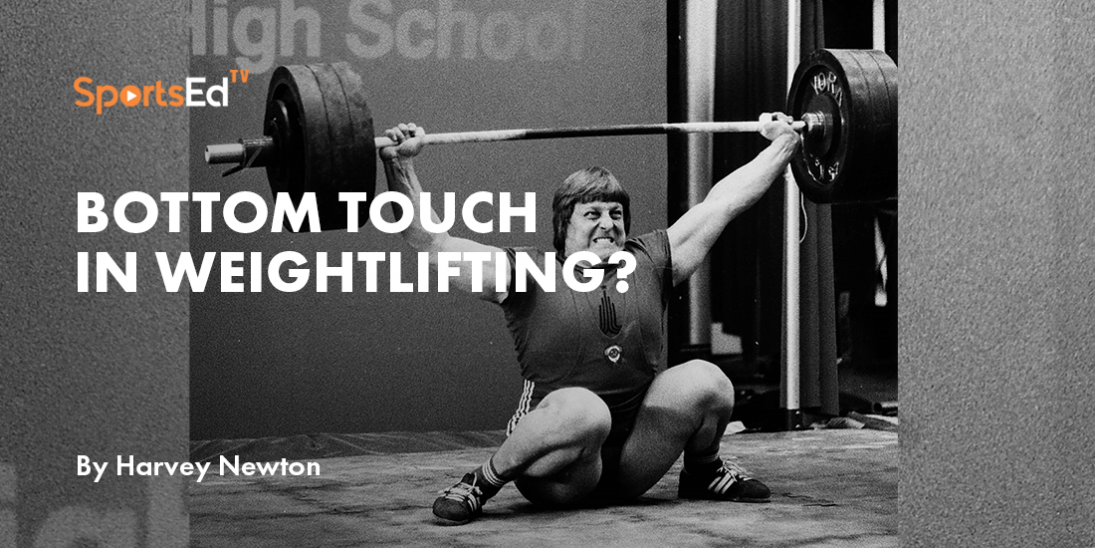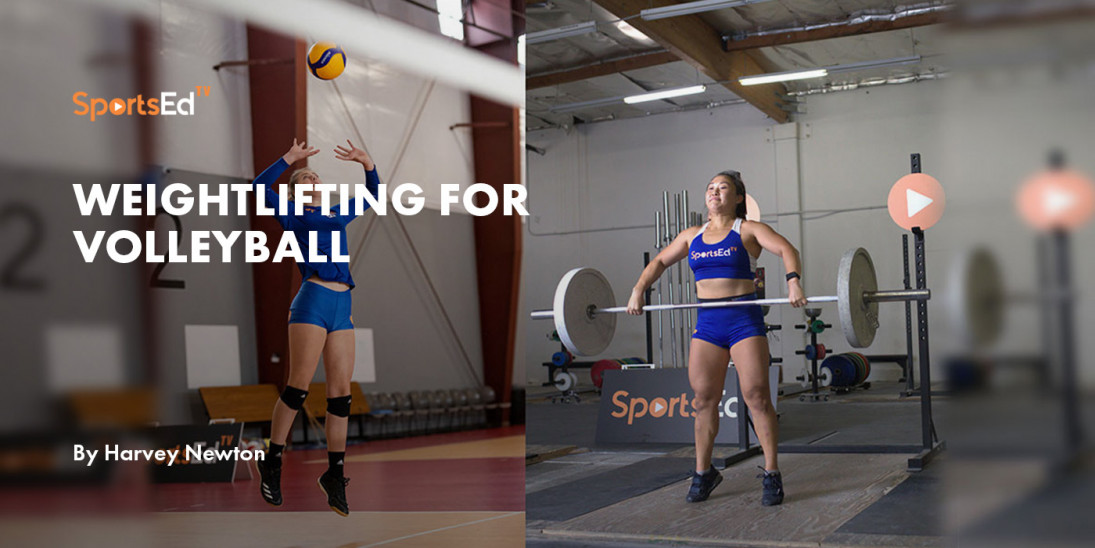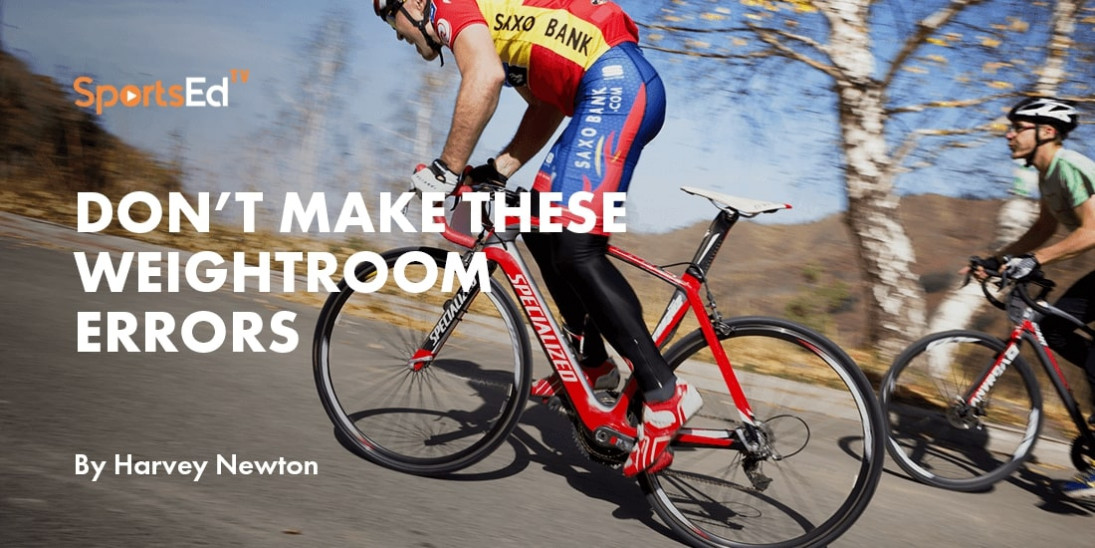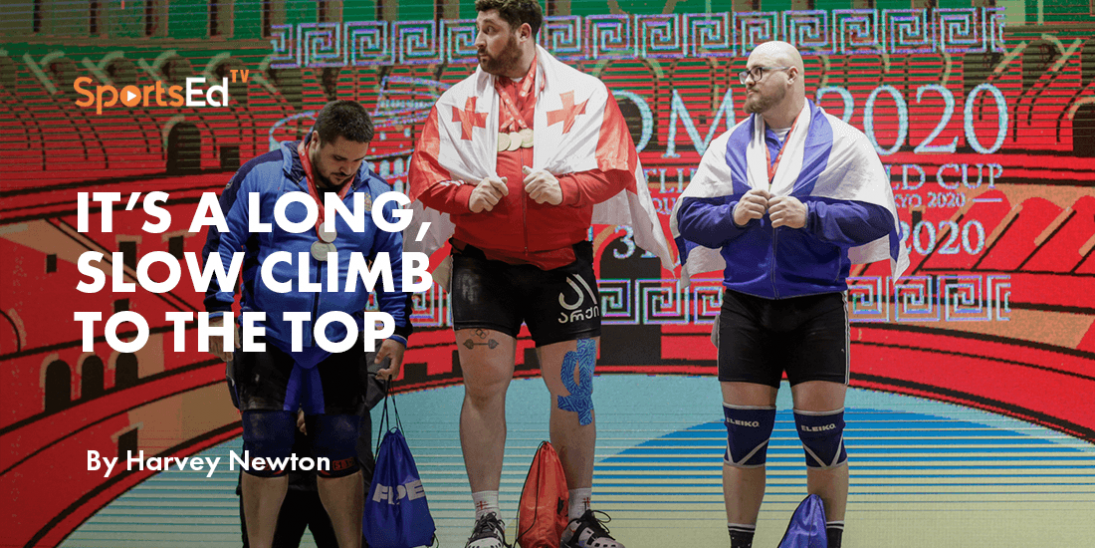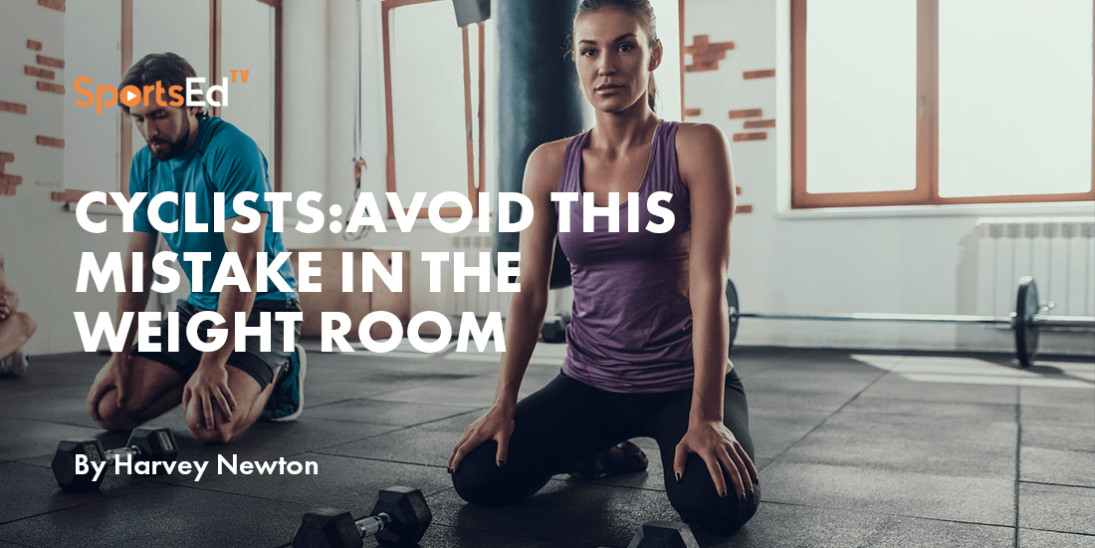Cycling
Welcome and thanks for visiting...

Seven Common Weightroom Errors Cyclists Often Make
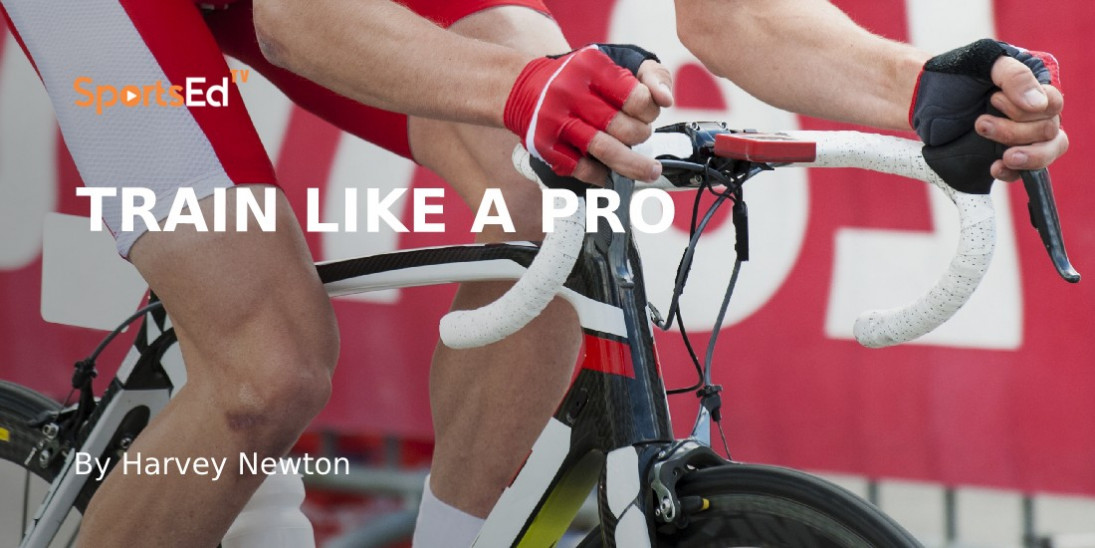
Harvey Newton, SportsEdTV’s director for weightlifting, has been an avid cyclist for many years, including years of masters’ racing. Years ago, USA Cycling requested Coach Newton develop educational materials to further cyclists’ knowledge of off-bike training. This was later updated to the Strength Training for Cyclists System (since “retired”) that included revisions, expansions, and improvements. Through a series of weekly blogs, Coach Newton shares key information with SportsEdTV viewers.
For cyclists in the Northern Hemisphere, this time of year is the offseason. Cycling intensity and volume are reduced, off-bike training (cross-training) ramps up, with riders aiming for improved performance in the next race season. Part of this work includes weight training. Proper weight training helps improve strength and power, and it can improve injury prevention. But all too often, cyclists fail to optimize the benefits of weightroom work.
Over the years I have noticed three common issues that can minimize the benefits of resistance training for cyclists. These include:
- Improper lifting technique
- Poor choice of exercises
- Weak training program composition
From my small booklet, How to Avoid Seven Weightroom Errors, I will cover weekly these challenges. Let’s get started.
Common Error #1
Not maintaining a year-’round weight training program.
This is a biggie. Most cyclists make a partial effort at improving their muscular fitness in the offseason by going to the weightroom. But as soon as the roads clear or the days lengthen, resistance training is the first thing to get dropped from the routine.
Deciding not to make off-bike strength and power training a year-’round pursuit is a sure-fire way to fail at getting stronger.
Let’s take the opposite example: Say a strength/power athlete wants to gain benefits from endurance training in their offseason. In reality, sports scientists tell us concurrent endurance training probably takes away from strength/power performance, but let’s say hypothetically there’s a need for this athlete to improve their body composition (a nice way to say, “Drop fat!”).
Our sprinter/lifter/shot-putter begins cycling and gradually gets up to 100-150 miles a week. His/her body composition is positively affected, but then they decide to drop the “cardio” work. The nice thing is, the body comp might stay the same (assuming no big change in diet). But, what happens to this person’s VO2 or other measures of aerobic fitness that improved after months of cycling?
Everything returns to the baseline level of fitness demonstrated before training. The same is true for endurance athletes who don’t maintain some form of strength/power training throughout the year. When we want you to demonstrate your newfound strength and power at the peak of your season, what happens? You don’t have it!
The smart answer is to resistance train (albeit in a reduced manner) throughout the entire year. Sure, you taper a week or two here or there, prior to the district or national races. And yes, your in-season weight training volume is greatly reduced.
But you keep your hard-earned benefits. Gains in strength and power are available when you need them most.
There are examples of other endurance sports in which year-‘round strength training pays huge benefits throughout the year. Cycling needs to figure this out.
In the next article: Emphasizing high repetition (>15) work
Read more:
Seven Common Weightroom Errors Cyclists Often Make Part I
Seven Common Weightroom Errors Cyclists Often Make Part II
Seven Common Weightroom Errors Cyclists Often Make Part III
Seven Common Weightroom Errors Cyclists Often Make Part IV
Seven Common Weightroom Errors Cyclists Often Make Part V
Seven Common Weightroom Errors Cyclists Often Make Part VI
Seven Common Weightroom Errors Cyclists Often Make Part VII (Final)
